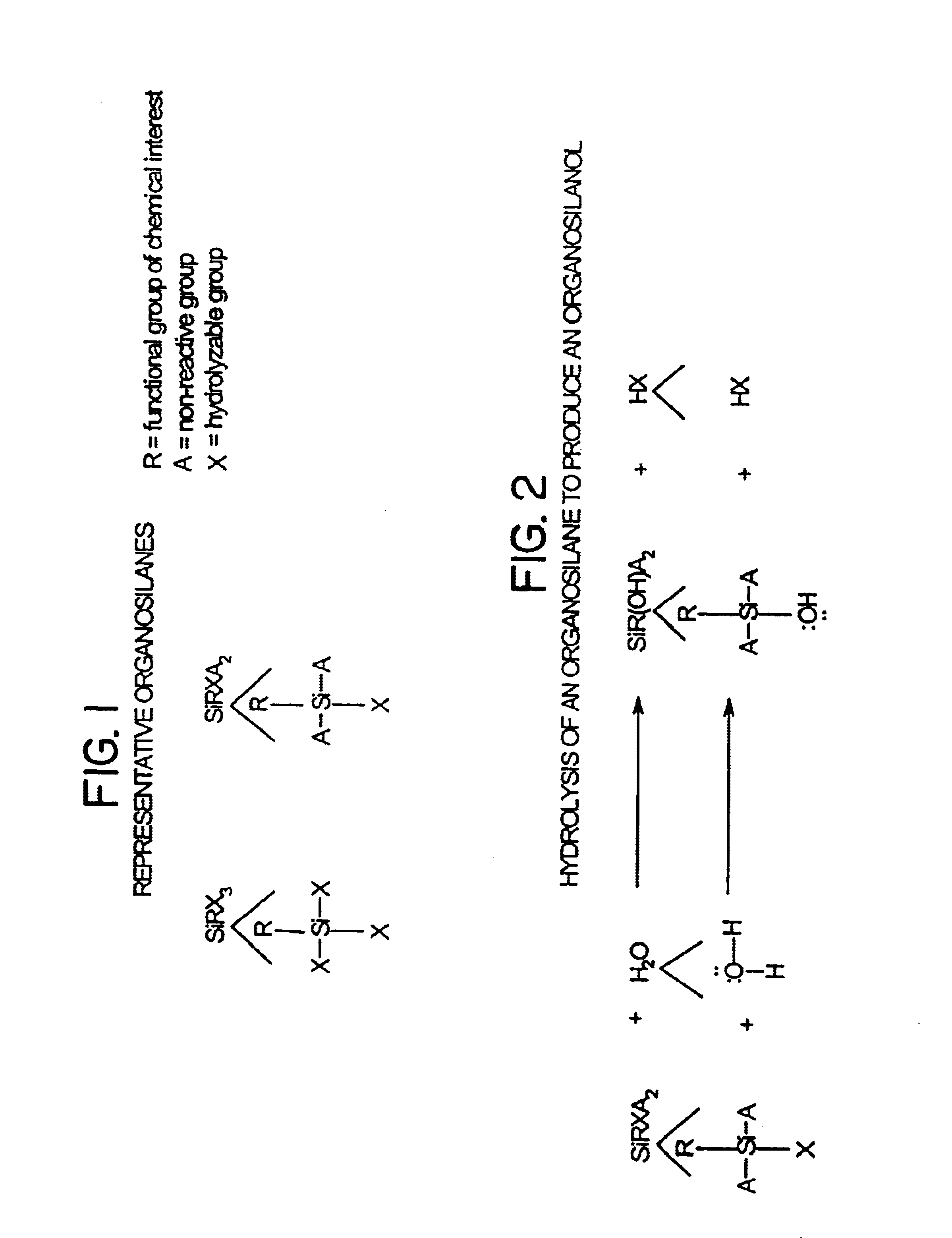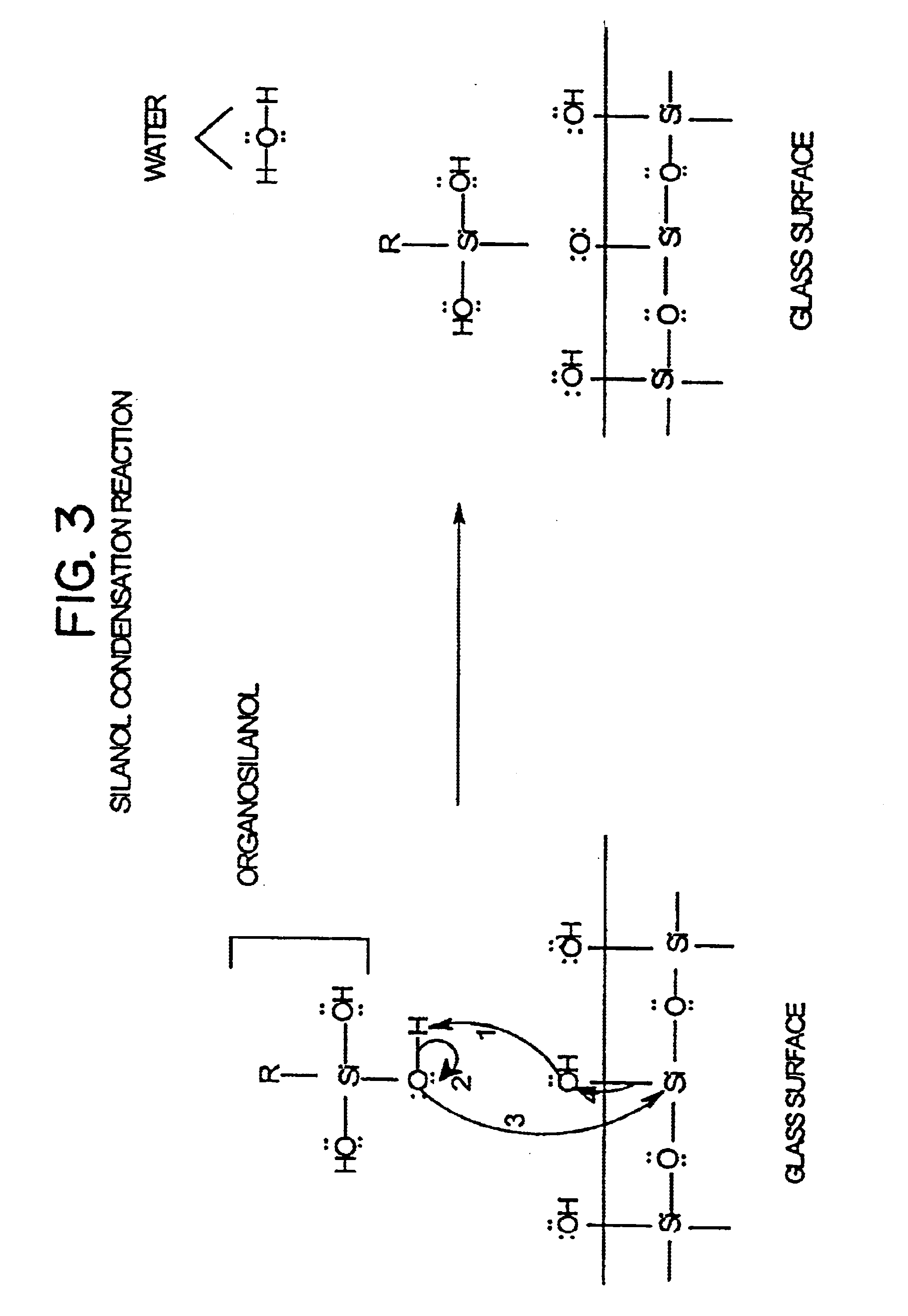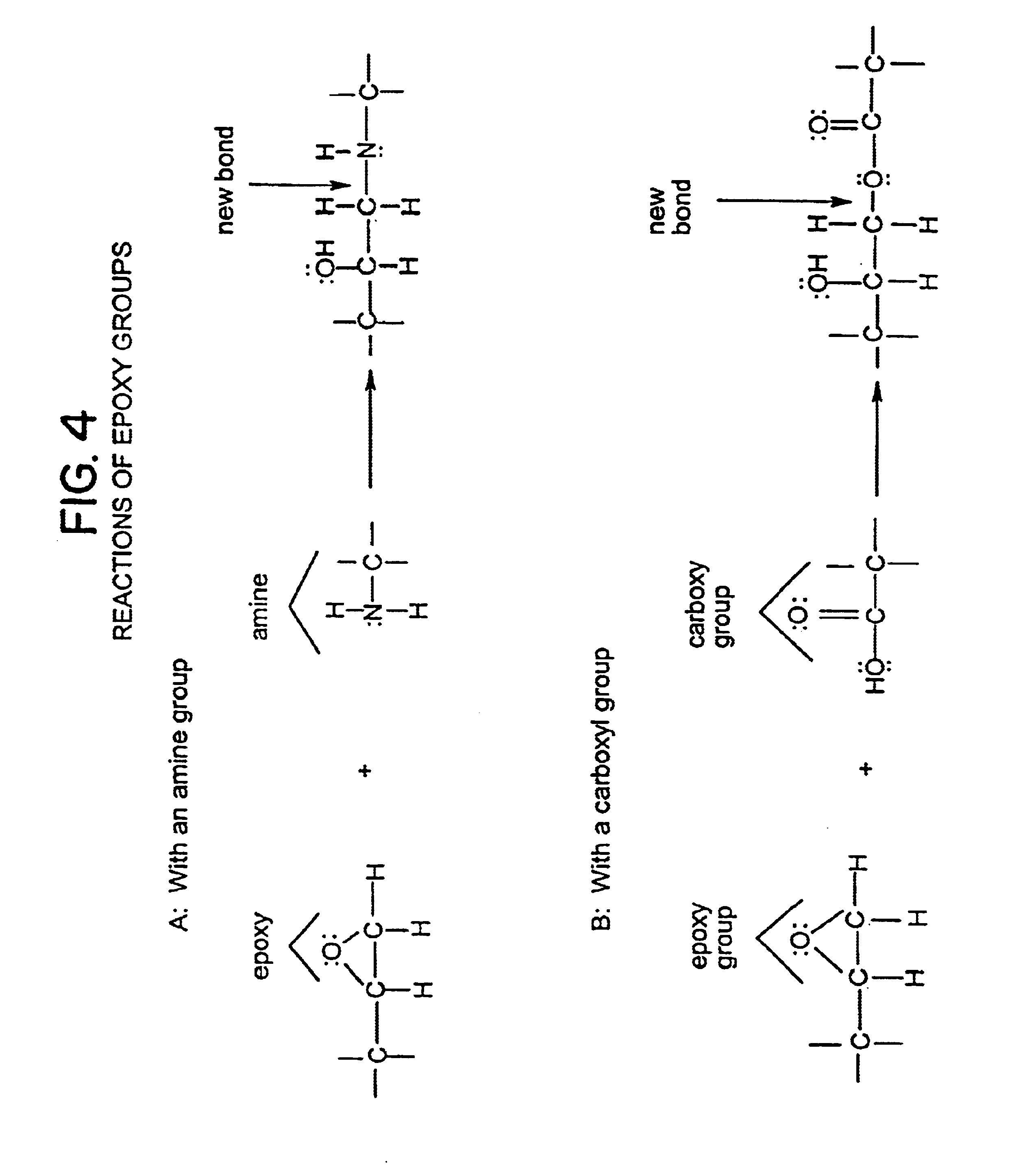Low fluorescence nylon/glass composites for micro-analytical diagnostic applications
a composite material and low fluorescence technology, applied in the field of composite microarrays nonluminescent slides, can solve the problems of high variability in the volume of dna spotted in each pixel of each array, insufficient application of "dot-blot" procedures, and the small number of arrays that can be made with each dipping, so as to minimize the interference of substances and minimize the participation in binding or detection.
- Summary
- Abstract
- Description
- Claims
- Application Information
AI Technical Summary
Benefits of technology
Problems solved by technology
Method used
Image
Examples
example 1
Preparation of Low Fluorescence Nylon / Glass Composites
The following example describes the casting of a carbon black impregnated nylon membrane, followed by the permanent attachment of the membrane to a glass slide to form a composite. The final composites consist of a twenty five millimeter (25 mm) by seventy five millimeter (75 mm) glass slide laminated with a nominally 0.2 micron pore size microporous carbon black impregnated nylon membrane that is about 2 mils in thickness.
A dope formulation comprising about sixteen percent (16%) by weight Nylon-66 (Monsanto.RTM. Vydyne.TM. 66Z), about seventy-seven percent (77%) by weight formic acid, and about seven percent (7%) by weight methanol, was produced using the methods disclosed in U.S. Pat. Nos. 3,876,738 and 4,645,602, the disclosure of each is herein incorporated in their entirety by reference. This is the standard formulation and method used to produce the (white) control membrane.
To produce the carbon black-containing membranes o...
PUM
| Property | Measurement | Unit |
|---|---|---|
| size | aaaaa | aaaaa |
| diameter | aaaaa | aaaaa |
| wave lengths | aaaaa | aaaaa |
Abstract
Description
Claims
Application Information
 Login to View More
Login to View More - R&D
- Intellectual Property
- Life Sciences
- Materials
- Tech Scout
- Unparalleled Data Quality
- Higher Quality Content
- 60% Fewer Hallucinations
Browse by: Latest US Patents, China's latest patents, Technical Efficacy Thesaurus, Application Domain, Technology Topic, Popular Technical Reports.
© 2025 PatSnap. All rights reserved.Legal|Privacy policy|Modern Slavery Act Transparency Statement|Sitemap|About US| Contact US: help@patsnap.com



